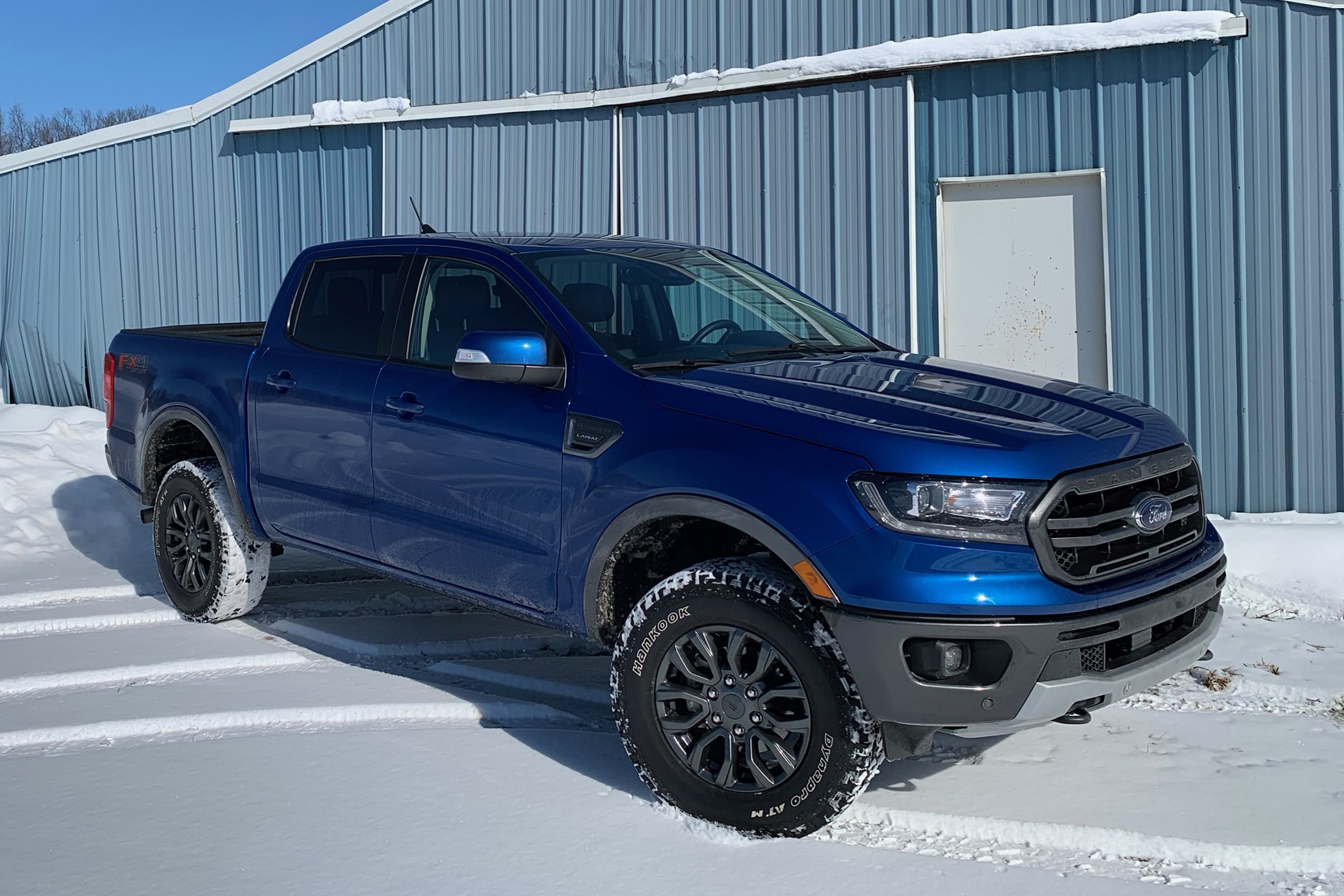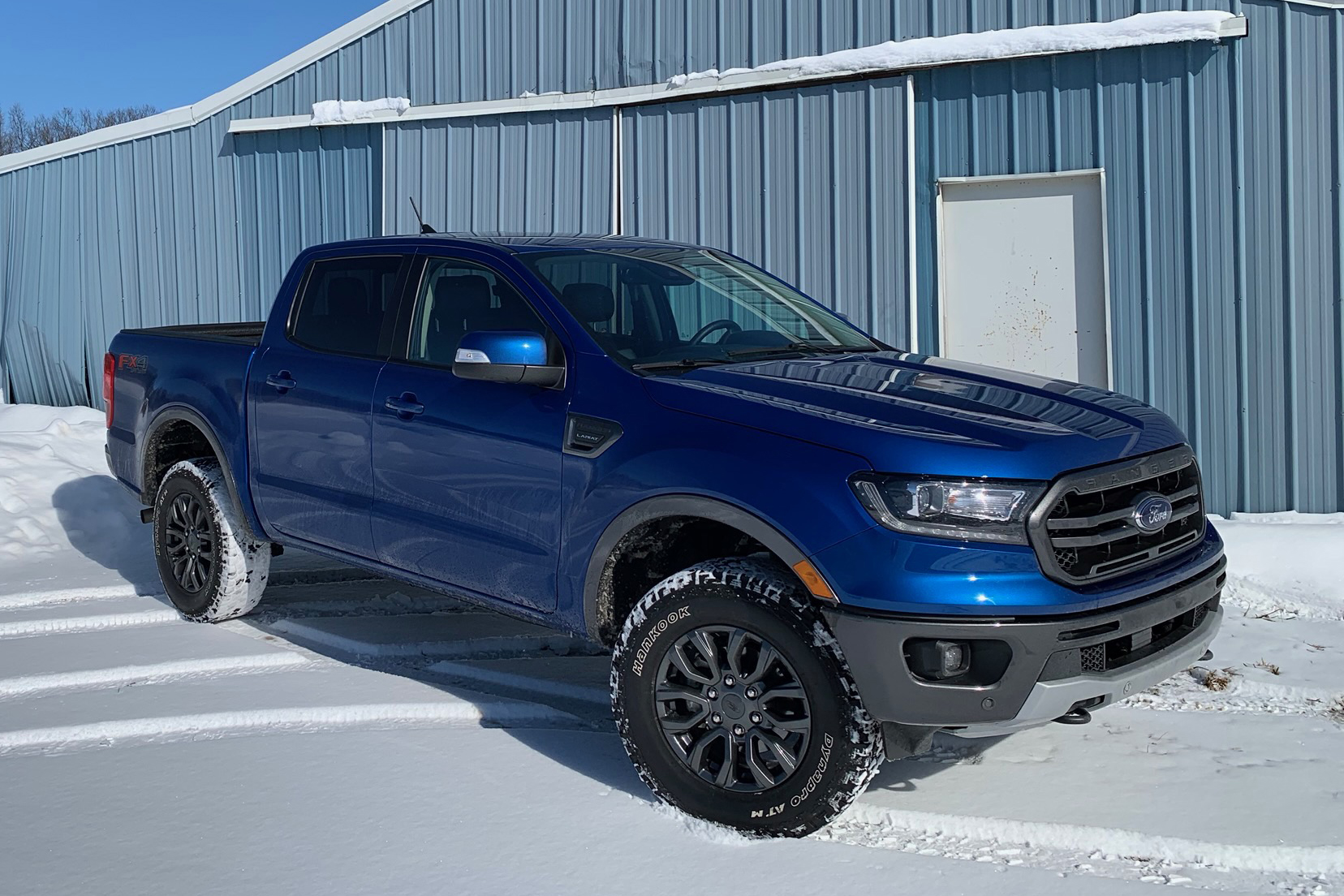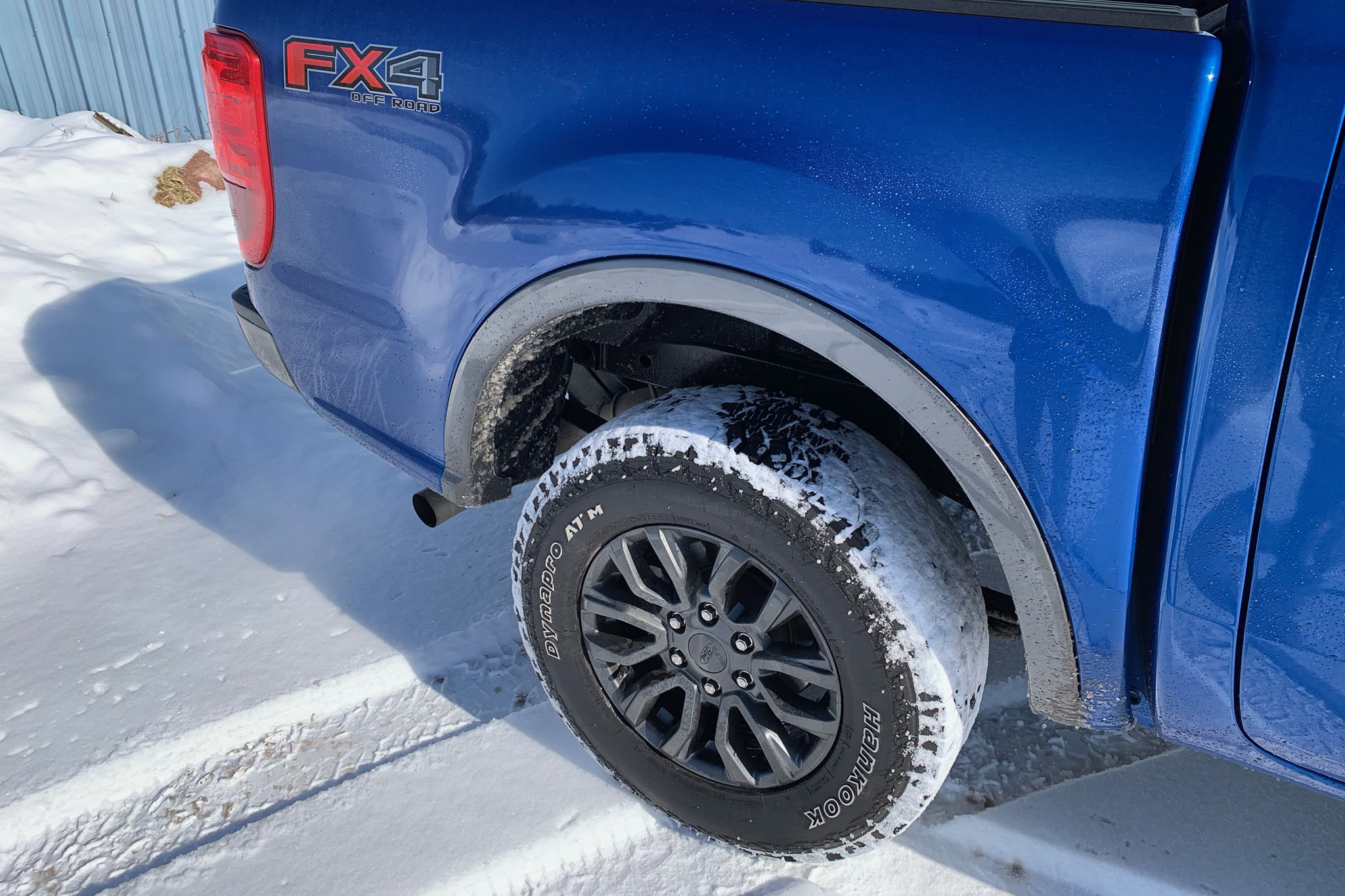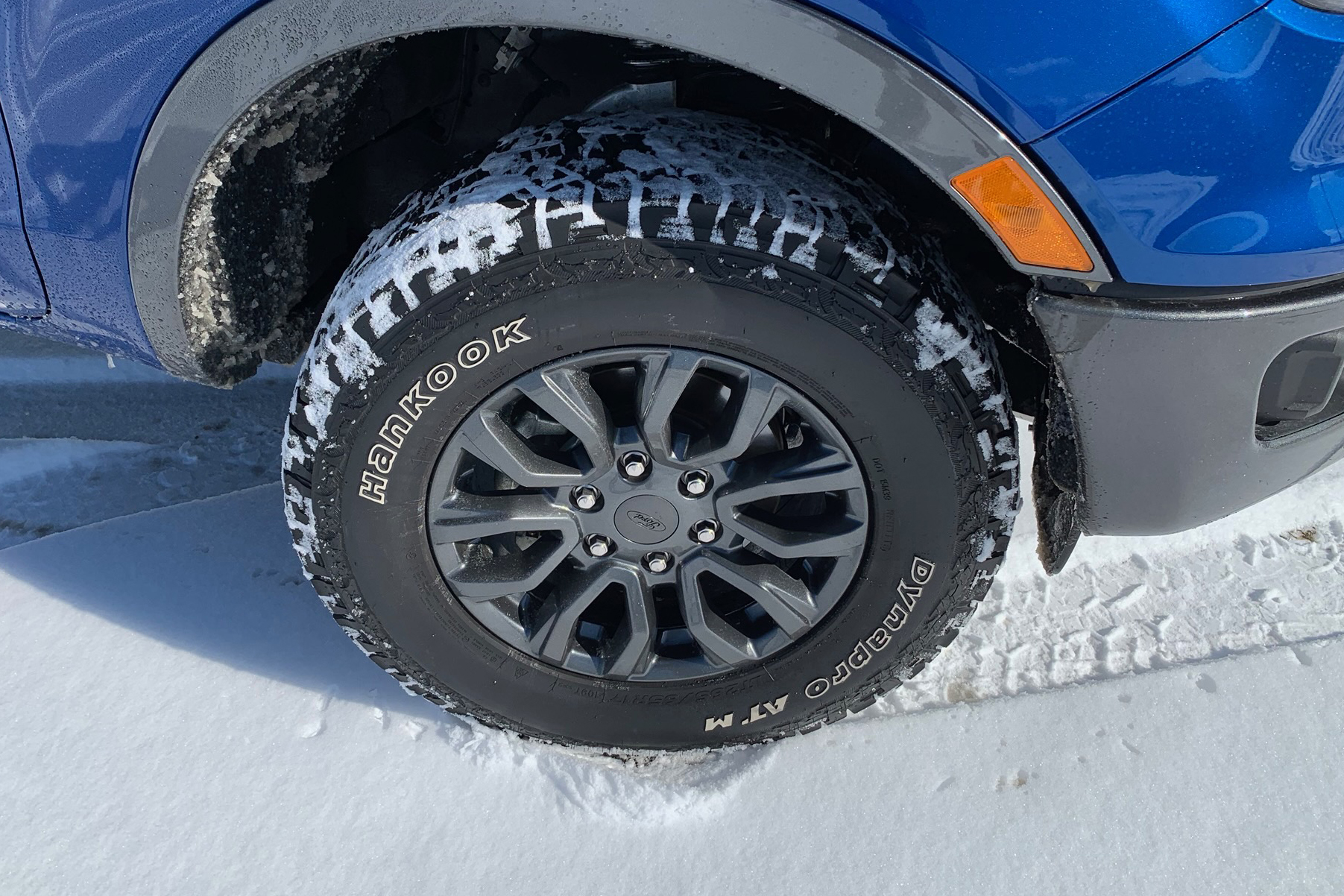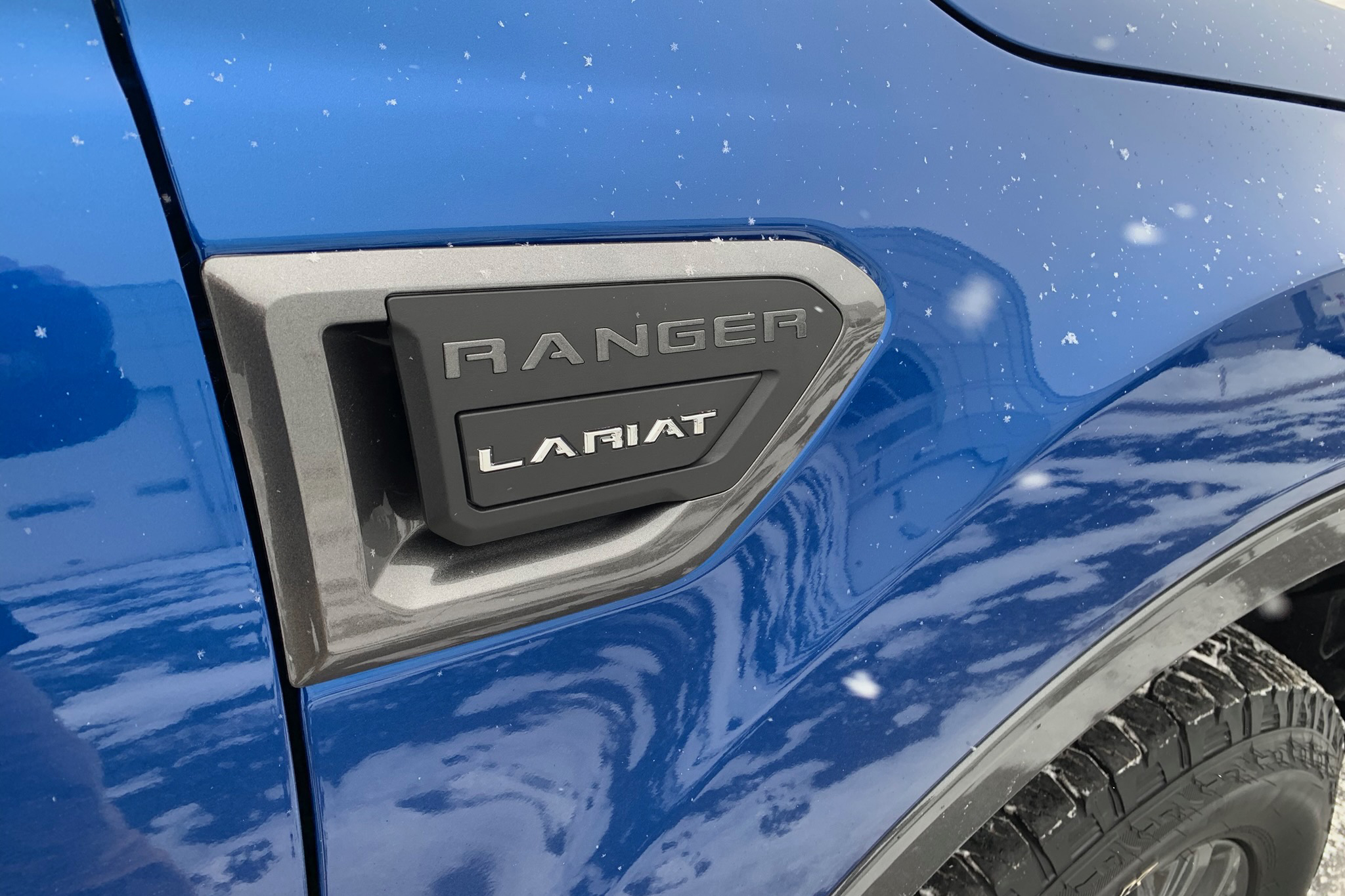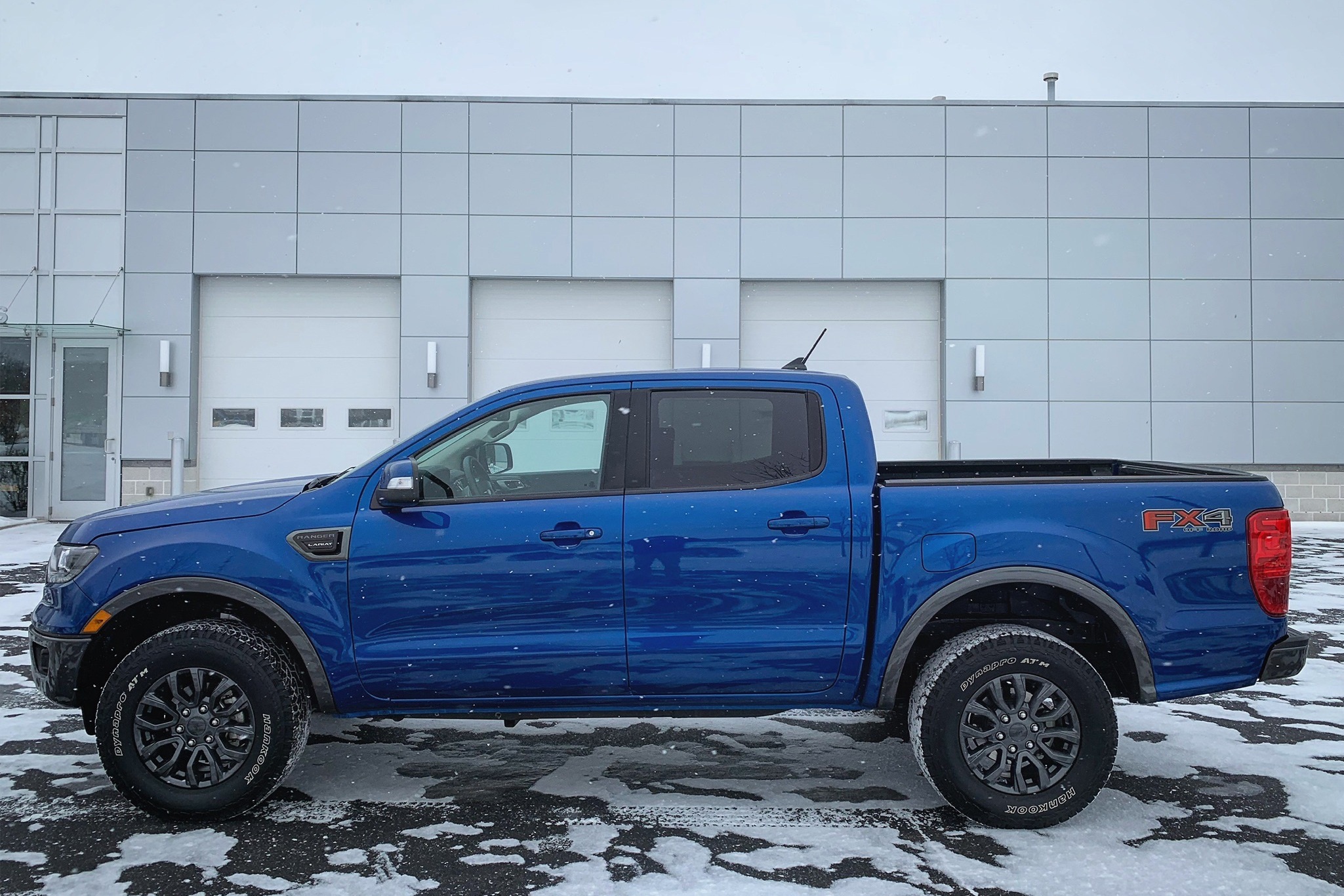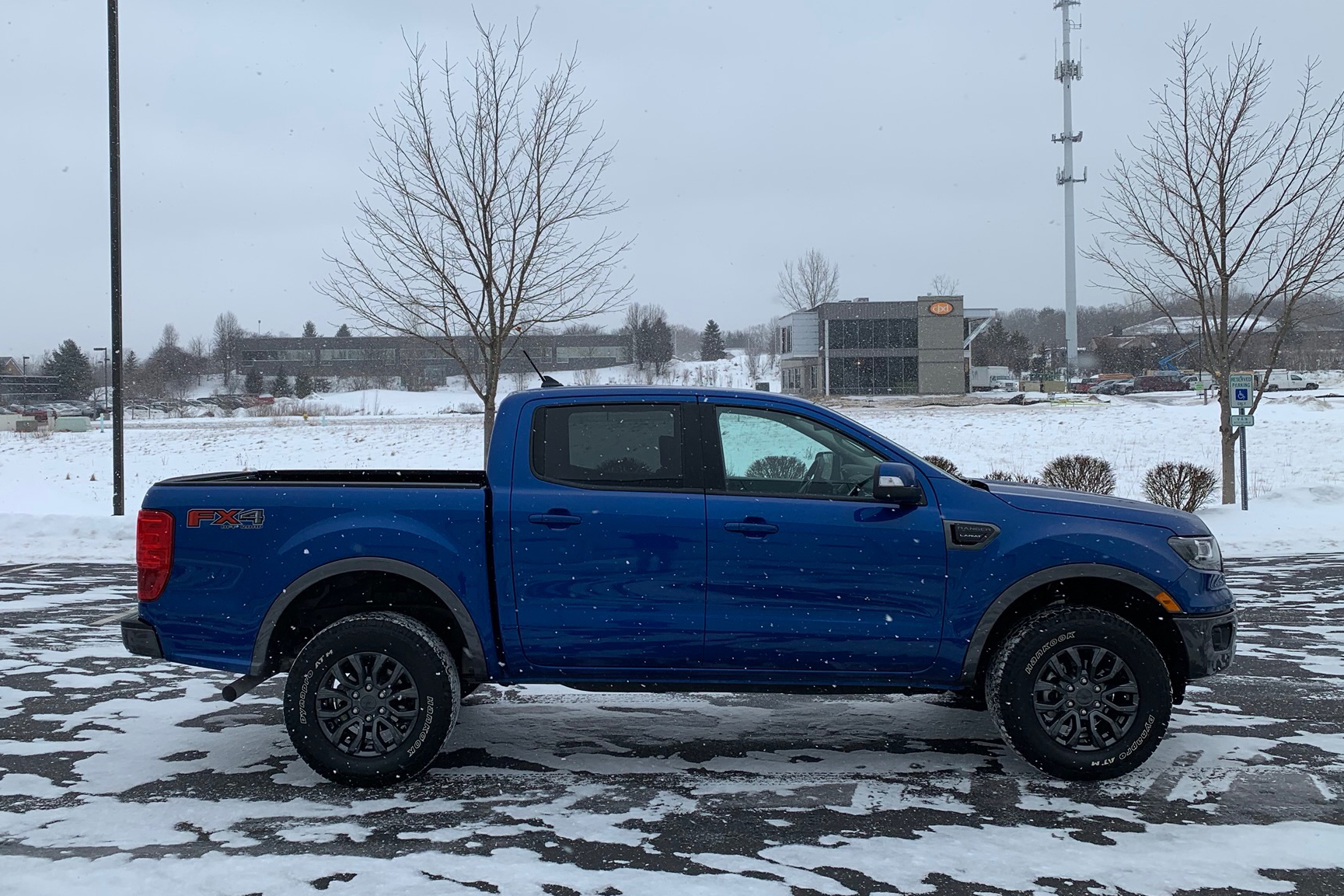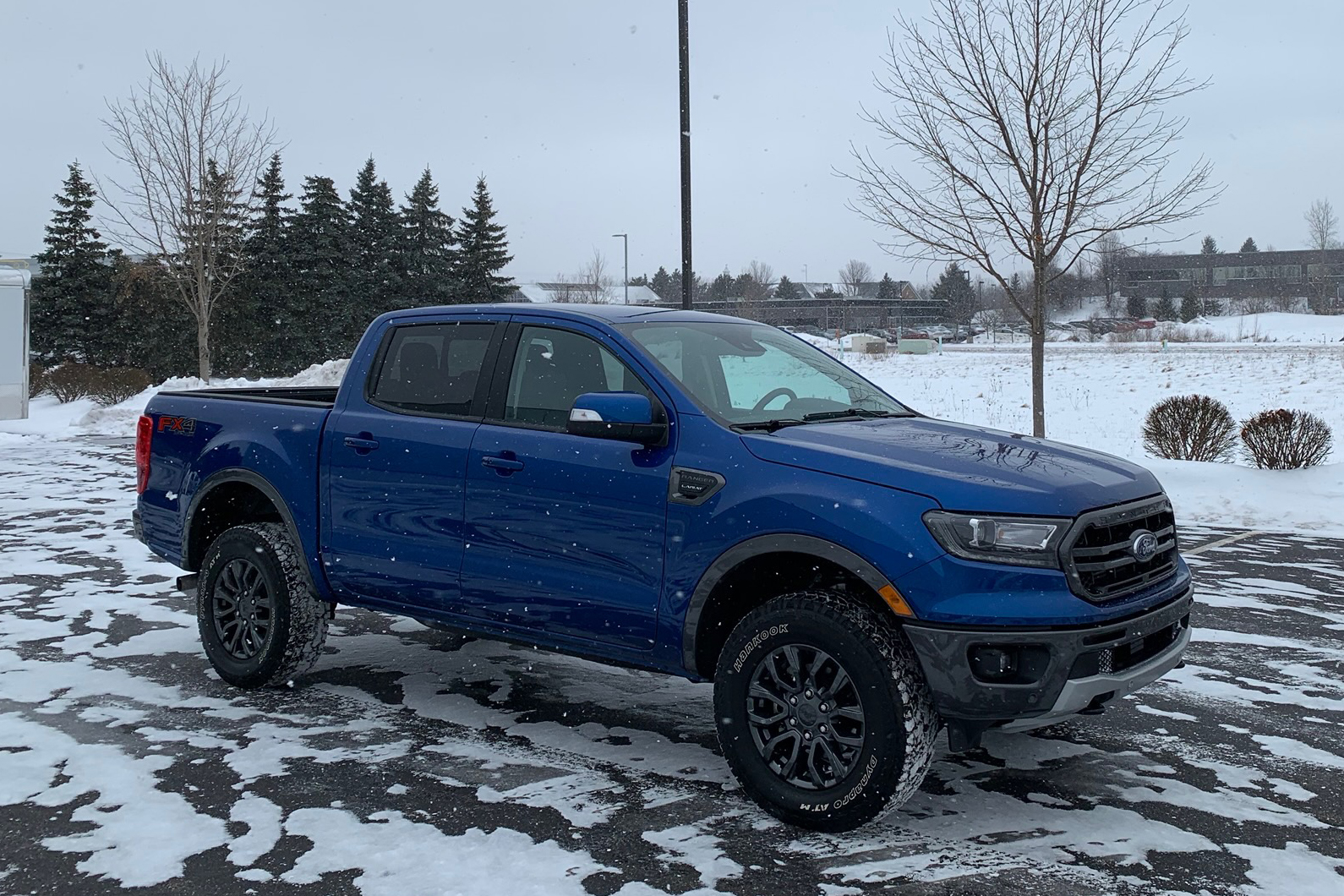Ford moved more than 900,000 F-series pickup trucks in the U.S. last year, and even before you begin factoring in the hundreds of thousands of GM and Ram trucks also sold, that makes it pretty clear America is crazy about trucks. But until only very recently, most of the newest and best options were full-size models. What about smaller pickups? We’re willing to bet many full-size buyers—and particularly those of the F-series—are former owners of the old Ford Ranger, which was discontinued in late 2011 but sold more than 350,000 examples annually at its peak.
Now the Ranger is back—more specifically an updated version of the model available globally since 2011—to contest the hot mid-size truck segment that includes the Chevrolet Colorado, GMC Canyon, and the bestselling Toyota Tacoma, which alone saw its sales leap by nearly 25 percent in 2018. I know our opinion of Ford’s newest truck, but I wondered what today’s truck shoppers think, so I took a top-spec Ranger Lariat SuperCrew and put it in front of three potential buyers.
Whitney | 34, owner of a horse-training business
Whitney loves trucks and uses them as intended; her working life with horses sees to that. And along with her husband, she’s a keen off-roader. Whitney recently (and reluctantly) sold her 1998 Ranger, as it had nearly 300,000 miles. Climbing into the new model, Whitney immediately asked questions about the controls. “It’s got a rear locking differential,” she said excitedly. “Most people don’t understand how those work.” That traction-enhancing tool is a $420 option or comes bundled with the $1295 FX4 Off-Road Package fitted to the test vehicle.
Once behind the wheel and on the move, Whitney noted, “I like the size. It’s bigger than my old Ranger. It’s refined and feels much newer, yet I really like the ‘trucky’ feel. Inside, it feels like an SUV. It’s very comfortable.” As she continued her drive, Whitney admitted, “I really miss my Ranger. I don’t want a full-size pickup due to [the difficulty] parking downtown.” She then squeezed the throttle closer to the floor. As our speed increased, I asked her what she thinks is under hood. “A V-6?” she wondered. Whitney was surprised to learn the Ranger uses a turbocharged four-cylinder, but it isn’t an issue. Nor is the standard stop-start system. “I notice it working but it doesn’t bother me,” she noted. “I like that it saves fuel.”
We arrived at a busy parking lot, where the Ranger’s maneuverability impressed but its rear seat did not. “I wish the backrest folded flat,” she said. “I really need a level surface for my dog and hauling stuff.” Flipping up the seat base reveals two not particularly large plastic storage bins. She’d prefer a flat floor. Plus, there’s no 60/40 split. GM and Toyota both have Ford strongly beat in this important area; there’s no trunk in a pickup and the rear seat serves as a versatile, secure storage area for many owners. Perhaps the next-generation Ranger will offer improvements.
Overall, Whitney is a big fan of the Ranger and it’s on her radar for a future purchase, although she may wait for a used example, she said, considering the as-tested price of $44,240. “If I were in the market for a new vehicle, I’d want a Ranger,” she said. “It’s easy to drive and easy to park. But it feels like a truck, which is a good thing.”
Ben | 30, real-estate developer
Ben has never owned a pickup, but he grew up on land with an apple orchard and has driven many trucks. He now lives in the upscale East Grand Rapids area and drives a Jeep Grand Cherokee. Previously, he owned a BMW 335xi. Ben’s now eyeing a new Jeep Gladiator, but he’s intrigued by the Ranger. “I like the idea of a four-door pickup for the SUV-like passenger compartment, but I’d use a tonneau-covered bed for stuff I don’t want inside the cabin.” Like Whitney, a full-size truck isn’t on his radar due to regularly parking downtown.
It took Ben just minutes behind the wheel of the Ranger to voice his disdain for the stop-start system and inquire about a Ranger Raptor. As he put on a few more miles in city traffic, he talked about the engine. “It’s not super-responsive,” he said. “There’s some lag and surging but it feels better at higher speeds. It sure has more power than my [V-6] Grand Cherokee”
Early in the drive, Ben thought the Ranger’s ride quality was SUV-like, but that was before we headed down a frost-heaved country road. “It reminds me of a Ford Super Duty!” he said. “Will a Gladiator ride similarly? Maybe I shouldn’t get a pickup truck! The Ranger feels like a truck, which isn’t ideal for me.” I explained the FX4 suspension setup as well as the heavier, stiffer optional LT tires, which both hurt ride quality. Over the course of the conversation, we both agreed on the Honda Ridgeline as the best option for his needs—if it didn’t look like a boring Pilot with a bed tacked on.
Ben continued to voice his eagerness to test drive a Gladiator, specifically an off-road-oriented Rubicon. “Would you skip the Rubicon if it meant a smoother ride?” I probed. “No,” he said. “The cool factor of the Rubicon—the off-road features and styling—is worth any sacrifices.”
“I like the Ford,” Ben said, “but it needs something. Maybe KC lights, a roll bar, or fender flares. But it’s still cool and I bet they’ll sell a ton. I think I’d consider a Ranger if there wasn’t the Gladiator. And if a Ranger Raptor were coming soon”—while one is sold elsewhere, we won’t get it until the next-generation model—“I’d maybe wait on the Jeep. But since that’s not happening, I’ll stick with a Gladiator.”
Jamie | 54, racing and fabrication shop owner
Jamie is a longtime truck buyer. He’s owned seven new Ford F-series since 1997 and currently drives an F-150 with a 5.0-liter V-8. “I thought about buying the EcoBoost,” he told me. “But a friend has one and he gets worse mileage.” Jamie is a larger fellow and likes the interior space of his full-size truck. But he doesn’t actually need a full-size truck, or a truck at all. “I drive my F-150 like a car. I occasionally put people in the back seat but use that area for my stuff.”
“I’d consider a Ranger, for sure,” he said. “I also thought about a diesel GM mid-size pickup.” He then asked about the output of the Ranger’s engine. “270 horsepower and 310 lb-ft of torque,” I told him. That impressed him. As he drove the Ranger, he commented on the light steering but said it was fine. He had plenty of room in the driver’s seat, though the back seat was a tight fit. It didn’t take long for Jamie to explore the Ranger’s power. “It’s faster than my F-150,” he noted. “And I like the [10-speed automatic] transmission. It’s smooth when driving slowly yet shifts seamlessly under power.” Then the stop-start system kicked in. “I’d disable it if I bought a Ranger—permanently,” he said.
As Jamie drove on, he commented on the ride. “It’s harsher than my F-150, surely due to the shorter wheelbase.” We then talked further about EcoBoost. “The Ranger’s engine note is fine, but my hearing isn’t great from working on racing engines,” he noted. “I’m a bit old school and like bigger engines. But I’m open to downsizing. I’m fine with the engine setup in the Ranger.” He then merged onto the highway. “It’s effortless,” he added. “I’m going 82 mph and it feels like 70 mph.” He later kicked it up to 95 mph and was very happy. “Plus, the Ranger rides better than my F-150 on this stretch of highway,” he noted.
But then the inevitable financial chat began. “I’d consider a Ranger over an F-150, but pricing is key,” Jamie said. “If I could get a Ranger and save $7500, I’d go that route. Otherwise, I’ll just buy another F-150, as the extra space is nice.” A direct price comparison between the Ranger and F-150 is tricky due to content differences, but it’s around $10,000. Yet there are usually strong incentives on the F-150—think multiple thousands of dollars—and Ford has yet to offer much of anything back on the Ranger. Thus it’s unlikely the Ranger is going to steal a ton of traditional F-150 buyers like Jamie, but Ford is probably okay with that—it makes money when it sells either one.
***
All three members of my little focus group were impressed with the Ranger. It’s clearly a better fit for Whitney and Ben, but Jamie still sees the mid-size Ford as a proper truck. I like it, too, especially the power, transmission, profile, and footprint. Ride quality is a concern, particularly with the FX4 suspension and LT tires, and real-world fuel mileage isn’t fantastic—just under 17 mpg, according to the trip computer. That’s significantly thirstier than the EPA numbers (20 mpg city, 24 highway, and 22 combined). More downsides include a lack of interior flexibility and the lower-grade interior materials, plus it needs a factory trailer-brake controller option to complement its 7500-pound towing capacity. Despite these things, though, the Ranger has a lot going for it and it’s a competitive addition to the segment. Based on the execution of the 2019 Ranger, I’m eager to see where it goes from here.
Source: Read Full Article

